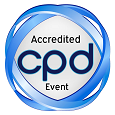Abdullah Abdulkhalq Al-Ghamdi
Al- Baha University, KSA
Title: Perception and attitudes toward nutrition during pregnancy among pregnant women attending the antenatal care at the primary health care centers. Albaha, Saudi Arabia
Biography
Biography: Abdullah Abdulkhalq Al-Ghamdi
Abstract
Abstract
Background
A good maternal diet is an important component that influences fetal development. While iron-deficiency anemia is the common type of anemia, its impact is one of the most considerable concerns during pregnancy as it increases the demand for iron supplementation. This study was conducted to assess the perceived importance of nutrition during pregnancy among women attending antenatal care at the primary health care centers in Albaha region, Saudi Arabia.
Methods
A sample of 66 pregnant women attending the antenatal care at four primary health care centers in Albaha during a two-week period in April 2016 was collected using a self-structured questionnaire.
Results
Of the 66 participants, 29 reported having three or less pregnancies, representing 43.9% of the overall sample size, followed by four to six pregnancies (25 women, 37.9%) and more than six pregnancies (12, 18.2%).
As for the participants’ knowledge of the which group with highest risk for iron-deficiency anemia, three women reported having a good knowledge (4.5%), 13 with a fair knowledge (19.7%), and 50 with a poor knowledge (75.8%) (page26). 33% of the participants had a good knowledge about the most important nutrient-rich element with irons, while 45% had a fair knowledge, and 21.2% had a poor knowledge. In addition, 63.6% know the impact of tea-drinking on intestinal iron absorption while 36.4% do not. Furthermore, 69.7% know the impact of vitamin C or lemon juice on intestinal iron absorption while 30.3% do not. A total of 59 pregnant women (89.4%) considered birth-spacing useful to the mother’s health, and seven pregnant women (10.6%) did not (page32). The relationship between level of education and total knowledge of participants is good P Value > 0.05 (P. Value = .000)
Conclusion
Higher level of education and occupation increase the total knowledge of participants.

